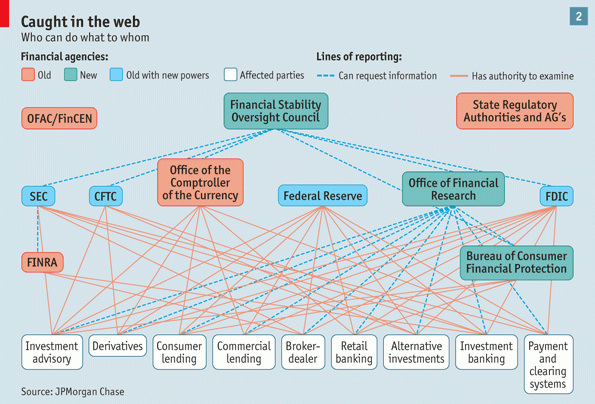 Has the exponential increase in lending regulations since 2008 contributed to the worst economic decline since the Depression of the 1930’s? Government “solutions” to problems have a long history of failure. In addition, the unanticipated consequences of government “solutions” often result in a plethora of new problems worse than the original ones the government was seeking to cure.
Has the exponential increase in lending regulations since 2008 contributed to the worst economic decline since the Depression of the 1930’s? Government “solutions” to problems have a long history of failure. In addition, the unanticipated consequences of government “solutions” often result in a plethora of new problems worse than the original ones the government was seeking to cure.
The hasty passage of the Dodd-Frank Wall Street Reform and Consumer Protection Act in the wake of the financial crisis of 2008 may turn out to be a prime example of governmental over reach. The same financial experts in Congress who never saw the financial crash of 2008 coming suddenly gained the wisdom to pass a massive amount of new laws and regulations that would prevent a future financial crisis.
According to the American Bankers Association, the 2,319 page Dodd-Frank Act establishes a daunting implementation challenge and the actual regulatory impact of the Act will be “several multiples greater than the statute.”
Jamie Dimon, Chairman and CEO of JPMorgan Chase, recently blasted the Dodd-Frank Act for impeding lending which, in turn, has made the current economic situation “worse than it otherwise would have been.” Granted, Mr. Dimon is not an unbiased bystander in this matter, but from his perspective as head of one of the largest banks in the country, he cannot be ignored.
In his recent annual letter to stockholders, Jamie Dimon made the following points about new rules and regulations that impact the banking industry.
- Dodd-Frank resulted in the creation of “multiple regulatory agencies with overlapping rules and oversight responsibilities.”
- The capping of fees on credit and debit cards is “price-fixing” which will result in millions of Americans becoming unbanked. The government can cap fees, but private lenders can refuse to lend if they cannot make a profit on these products.
- The Dodd-Frank Act has added complexity and confusion for lenders -“We have hundreds of rules, many of which are uncoordinated and inconsistent with each other.”
- JPMorgan Chase has had to devote “enormous attention and resources” to meet new regulations. Over the next few years, a staggering 14,000 new regulatory requirements will have to be implemented, which does not include an onslaught of additional regulations from two new regulatory agencies created by Dodd-Frank – the Office of Financial Research and the Consumer Financial Protection Bureau.

Congress may have had good intentions, but the Dodd-Frank Act has done little to help the average consumer. Credit card approval has become difficult to obtain unless the applicant has pristine credit scores and interest rates have increased for all cardholders. Mortgage underwriting standards have become so tough that even FHA borrowers need a FICO credit score of nearly 700. Loan costs for all borrowers will increase as the banks pass on the huge cost of complying with thousands of new lending regulations.
Some may wonder – did anyone actually benefit from the passage of Dodd-Frank? Yes, the winners are bank employees responsible for implementing new lending regulations and the vast multitude of government regulatory employees responsible for compliance with Dodd-Frank – both of these groups now have guaranteed lifetime employment.
Speak Your Mind
You must be logged in to post a comment.